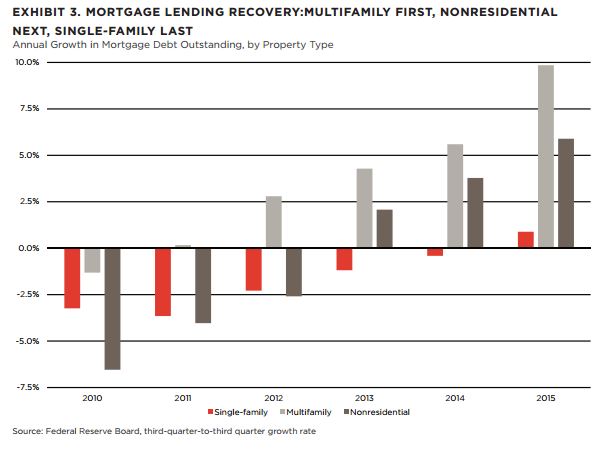 The number of homeowners in the United States with negative equity, or are “underwater,” is about one-third of what it was during its peak reached in 2010, and single-family mortgage debt outstanding is on the rise.
The number of homeowners in the United States with negative equity, or are “underwater,” is about one-third of what it was during its peak reached in 2010, and single-family mortgage debt outstanding is on the rise.
Combined, those two factors indicate that the single-family housing segment is the strongest it has been post-crisis—but there is still room left for improvement, according to CoreLogic’s January 2016 MarketPulse released on Thursday.
Not only are homeowners rapidly regaining equity (the number of underwater homeowners had fallen to 8 percent, or about 4.1 million, as of the end of September 2015), but equity in owner-occupied homes is gaining at a faster pace than average, according to CoreLogic. Equity in owner-occupied homes has risen by $1.3 trillion year-to-date in 2015 as of the end of September, compared to an increase of $741 billion for all single-family homes during the same period.
Single-family mortgage debt outstanding also rose in the first nine months of 2015, but only by $80 billion. In fact, 2015 was the first year in a decade that both home equity and mortgage debt outstanding rose during the same year. Single-family was the last of the major property segments to see an increase in mortgage debt outstanding following the crisis, after multifamily (2011) and non-residential (2013), according CoreLogic.
In a growing housing market, mortgage debt outstanding and home equity will continue to rise, CoreLogic Chief Economist Frank Nothaft said. According to Nothaft, Mortgage debt outstanding will increase during a growing market for three reasons:
- More homebuyers using a mortgage loan to buy a home;
- Existing homeowners cash out equity through a refinance or a second mortgage;
- Aggregate debt outstanding and mortgage debt outstanding can increase simultaneously due to an increase in single-family housing stock.
“The growth in home equity and nascent recovery in single-family mortgage debt underscore that the single-family market continues to get healthier but has not fully recovered,” Nothaft said. “If home prices rise uniformly across the nation in the coming year, we expect to see the number of underwater homes fall by another 1.1 million in the coming year as appreciation lifts them up from being underwater. This will allow their equity to grow while their debt pays down.”

 DSNews The homepage of the servicing industry
DSNews The homepage of the servicing industry











